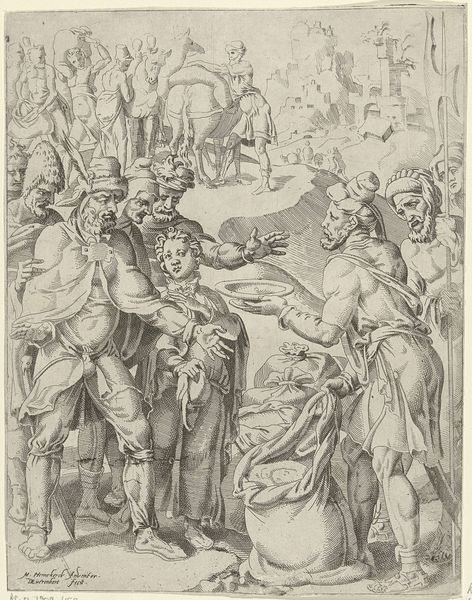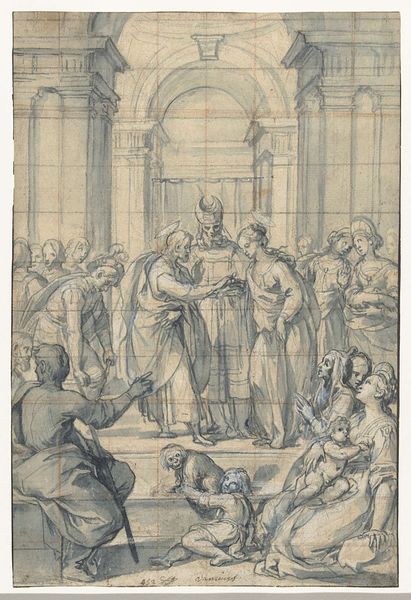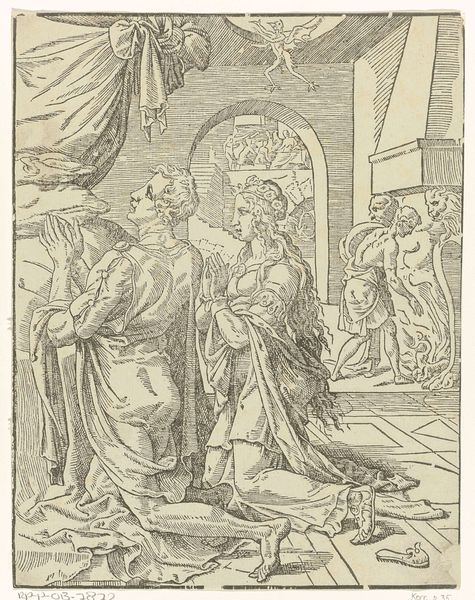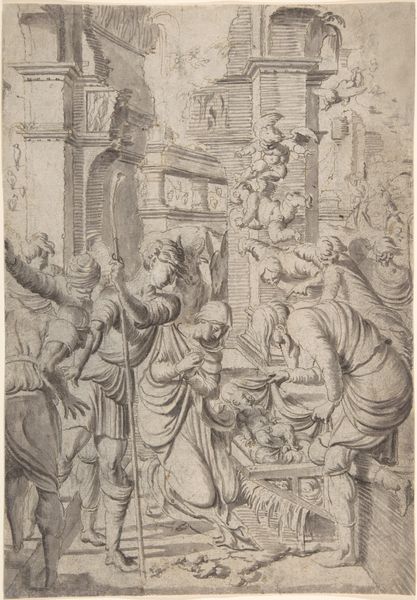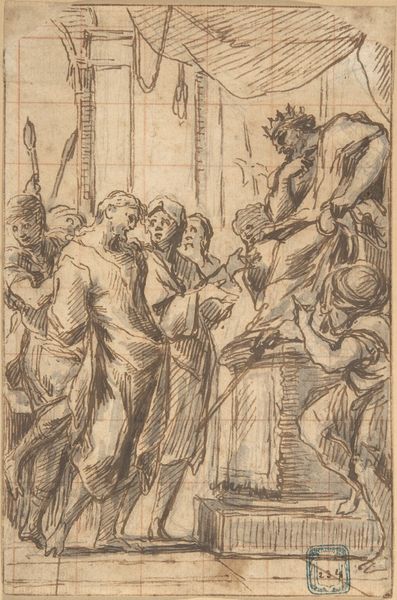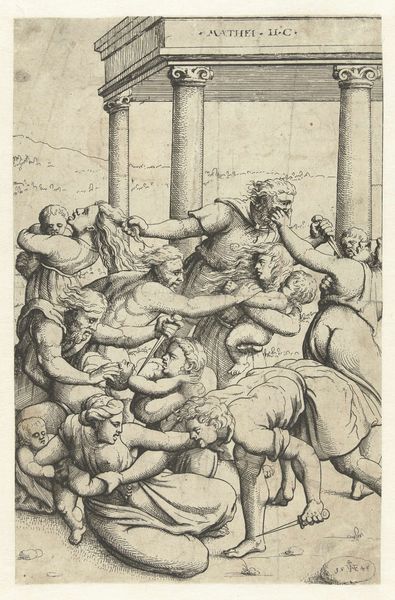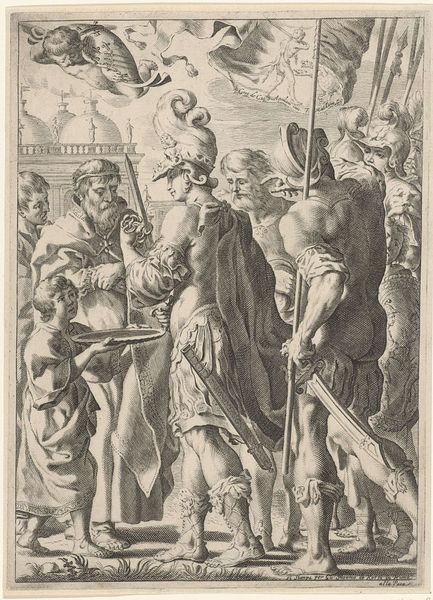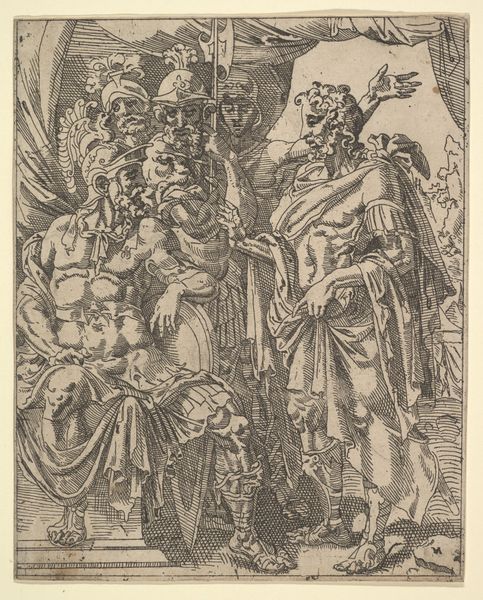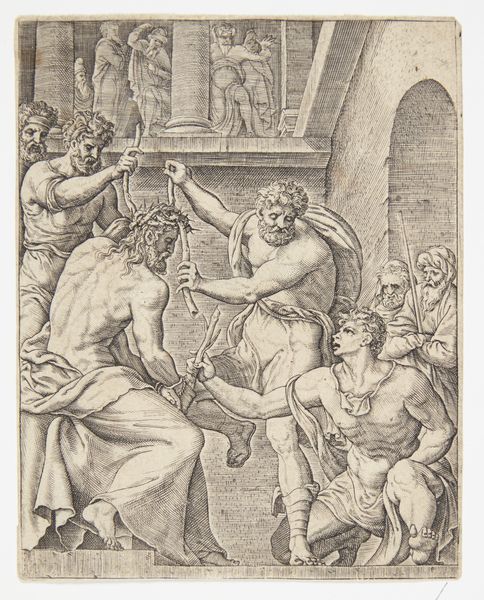
drawing, paper, ink, pen
#
drawing
#
ink drawing
#
narrative-art
#
pen illustration
#
pen sketch
#
pencil sketch
#
figuration
#
paper
#
11_renaissance
#
ink
#
pen-ink sketch
#
pen
#
history-painting
#
northern-renaissance
Dimensions: height 285 mm, width 203 mm
Copyright: Rijks Museum: Open Domain
Editor: This is Aertgen Claesz. van Leyden's "The Meeting of Abraham and Melchizedek," a pen and ink drawing on paper from around 1525 to 1530. The detail is striking for what looks like a sketch, particularly the textures created by the varying ink washes. What stands out to you in terms of the materials and construction? Curator: It's crucial to recognize the context: drawings like this weren't always considered autonomous artworks. The paper itself, and the ink, point to a specific kind of craft production. Look at the precision, it was likely conceived within a workshop setting, potentially as preparation for a larger work, like a print or panel painting. Do you notice the clear depiction of those wheeled carts in the background? Editor: Yes, they're very detailed. They add to the overall sense of narrative and movement. Curator: Exactly. The artist meticulously rendered these everyday objects alongside the figures. This elevates the status of the quotidian, incorporating labor and transit into the sacred narrative. Think about the economics of producing and moving those supplies, compared to commissioning religious art. Editor: So, by highlighting those usually unseen aspects, Van Leyden’s changing our perception of religious art? Curator: Precisely! The very act of committing this scene to paper and ink implicates both artist and patron in a material exchange. They're participating in the production and consumption of meaning through both labor and devotion. What happens to our understanding of Abraham and Melchizedek when they are placed on the same level with wheeled carts? Editor: That gives me a lot to think about. I was originally focused on the biblical scene, but the attention to materials and production adds another dimension to understanding its value and message. Curator: And that attention reminds us of the society that produced, consumed, and found meaning in its art.
Comments
No comments
Be the first to comment and join the conversation on the ultimate creative platform.
